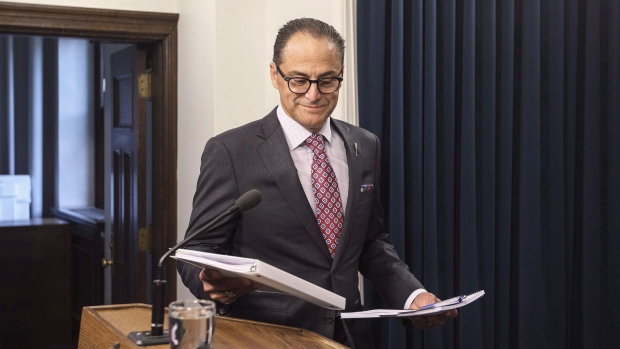Feb 27, 2019
Alberta on track for $6.9B deficit, as oil sands power budget
, Bloomberg News

A relentless increase in production from Alberta’s oil sands and higher crude prices in the first half of the year are powering the province’s budget through a pipeline shortage that has weighed on economic growth.
The government is projecting a deficit of $6.93 billion for the fiscal year that runs through March. That’s down from an original forecast of $8.8 billion in March and $7.51 billion in an update in November.
Driving the improving financial picture is a small but steady increase in output from Alberta’s prolific oil sands, which represent the world’s third-largest crude reserves, as well as a surge in oil prices in the first half of the year. The production gain, fueled by large projects that took years to start churning out oil, is coming despite a shortage of pipeline space and a temporary curtailment plan that will reduce output in the first half of this year.
Alberta forecast that oil production in the province will increase by about 132,000 barrels a day in 2019, a gain of 3.8 per cent, with most of that in the second half of the year as new pipelines come into service and the curtailment plan is phased out. That increase would follow an almost 10 percent gain last year.
However, the pipeline bottleneck has chilled capital spending by oil producers, which is weighing on economic growth in the province. The government estimates economic growth of 2.4 per cent for last year, down from a forecast of 2.7 per cent in March. For the current year, Alberta is projecting economic growth of 1.6 per cent, down from a 2.5 per cent forecast in March.
Other highlights from the fiscal update:
-Revenue is expected to be $49.6 billion, up 3.7 per cent from an original projection in March.
-Expenses are forecast to be $56.6 billion, up 0.7 per cent from original projections
-Direct borrowing for the 2018-2019 fiscal plan is expected to be $4.8 billion, down from an original projection of about $7 billion.
